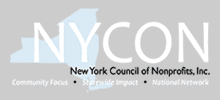
Vision: Looking Back to Look Forward
by Tim Delaney
 Most people know that the transitional month of January is named after Janus, the Roman god of beginnings and endings who looked both backwards and forwards at the same time. But how many of us know about the power of the Janus Effect? I certainly didn’t, until reading a brilliant book, The Leadership Challenge, by James Kouzes and Barry Posner. In it, the authors recount the Janus Effect research that can help nonprofits. Corporate CEOs were divided into two groups and asked to: “think of things that might (or will) happen to you in the future” and “think of things that have happened to you in the past.” In answering the questions participants were to list 10 events, attaching dates to each event. But the order of questions was switched. Group A was asked to think of the future first; Group B to think of the past first. When comparing results, CEOs in Group B – which first thought of the past – consistently envisioned twice as far into the future than those in Group A that looked at the future first. Since reading The Leadership Challenge many years ago, I’ve enjoyed tapping into the power of the Janus Effect in various ways that you can use, too. It doesn’t have to be elaborate. In fact, here’s how our staff at the National Council of Nonprofits recently invoked the power of looking to the past to sharpen our view of the future. Most people know that the transitional month of January is named after Janus, the Roman god of beginnings and endings who looked both backwards and forwards at the same time. But how many of us know about the power of the Janus Effect? I certainly didn’t, until reading a brilliant book, The Leadership Challenge, by James Kouzes and Barry Posner. In it, the authors recount the Janus Effect research that can help nonprofits. Corporate CEOs were divided into two groups and asked to: “think of things that might (or will) happen to you in the future” and “think of things that have happened to you in the past.” In answering the questions participants were to list 10 events, attaching dates to each event. But the order of questions was switched. Group A was asked to think of the future first; Group B to think of the past first. When comparing results, CEOs in Group B – which first thought of the past – consistently envisioned twice as far into the future than those in Group A that looked at the future first. Since reading The Leadership Challenge many years ago, I’ve enjoyed tapping into the power of the Janus Effect in various ways that you can use, too. It doesn’t have to be elaborate. In fact, here’s how our staff at the National Council of Nonprofits recently invoked the power of looking to the past to sharpen our view of the future. |
Lead In!
by Jennifer Chandler
 In the popular book, Lean In: Women, Work, and the Will to Lead, by Sheryl Sandberg, the COO of Facebook, Sandberg urges aspiring leaders to “believe in yourself,” “give it your all,” and never doubt your ability to navigate conflicts between your personal and professional lives. By doing this Sandberg believes you can rise to a leadership position, and once there, make changes that will benefit others who come after you. While it may not be her primary message, she asserts that it is a leader’s obligation to leave the workplace a better place for those who follow. In the popular book, Lean In: Women, Work, and the Will to Lead, by Sheryl Sandberg, the COO of Facebook, Sandberg urges aspiring leaders to “believe in yourself,” “give it your all,” and never doubt your ability to navigate conflicts between your personal and professional lives. By doing this Sandberg believes you can rise to a leadership position, and once there, make changes that will benefit others who come after you. While it may not be her primary message, she asserts that it is a leader’s obligation to leave the workplace a better place for those who follow.
While spending a day with nonprofit leaders recently, I was reminded of Sandberg’s assertion. We were going through the familiar process of identifying challenges and opportunities for a SWOT analysis, when the discussion settled somewhat uncomfortably on the challenge of succession planning as a widespread challenge that no one wants to talk about, but everyone worries about.
With the candor often shared by executive directors who are relieved to find themselves with peers, bonding over shared war stories, succession planning was described as “the one issue NONE of my board members will look in the eye” and “the biggest, baddest vulnerability we face.” Stories were shared about the death of a founder, leaving an organization in such chaos it almost closed its doors; the challenges of cross-training an organization with only three staff members; and the risks of being the one to raise the issue if you actually plan to stay in your job. It was clear that for this group of leaders, succession planning touched a raw nerve.
|
Clean up!
Your donor database is a living, breathing ecosystem. Contained within are thousands of individual needs, expectations and passions. Tapping into the unique giving personas of your donors is impossible when your database consists of one giant lump of donors, each of whom receive the same letter template via one communication channel.
Those fundraisers who have mastered segmentationare able to communicate on an individual level, unlocking the true potential of every donor in their database. You can do it too, and the beginning of the year is a great time to get started.
|













No comments:
Post a Comment